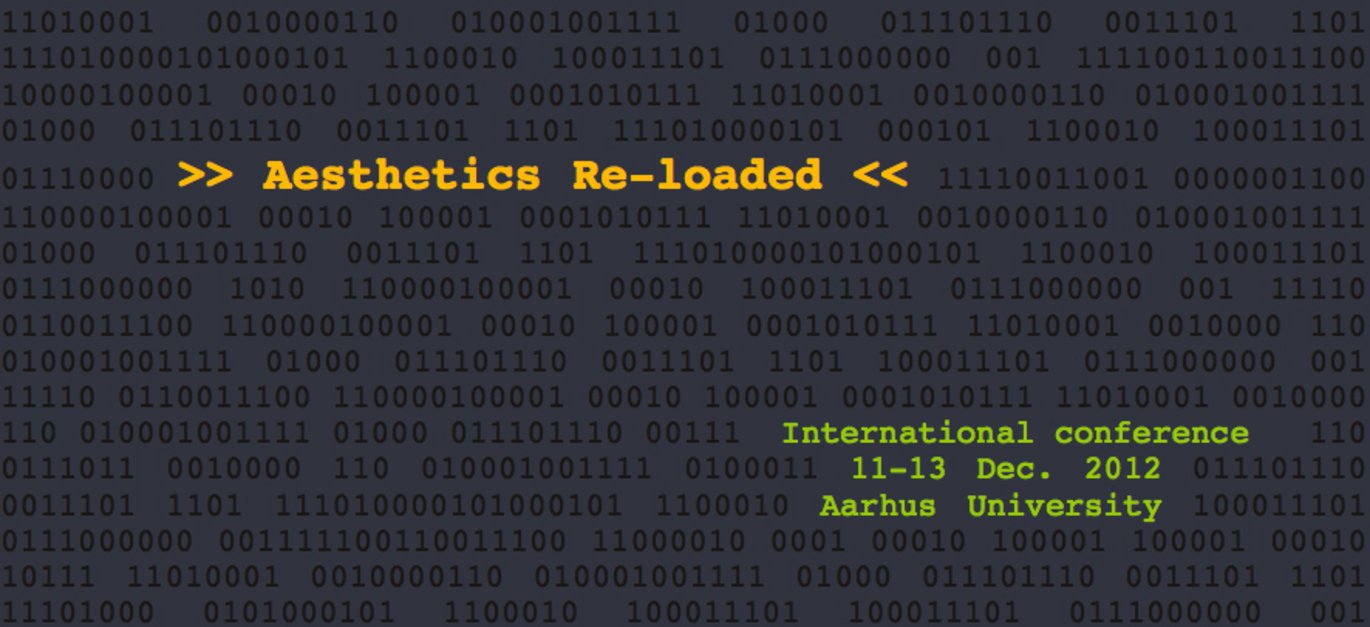Aesthetics Re-loaded
At the upcoming conference Aesthetics Re-loaded, several of the researchers in PIT will participate with papers dealing with partipatory perspectives on the interweaving of aesthetics and contemporary technologies. Exploring the challenges that new computational technologies pose for aesthetic theory, researchers, designers, and artists will meet at Aarhus University on Dec 11-13.

Investigating the relationship between the concepts of 'digital', 'aesthetics', 'art', and 'culture', the international conference Aesthetics Re-loaded aims to advance and exchange research on aesthetics within the field of new technology. The conference explores the concept of aesthetics by investigating the challenges that new computational technologies pose for current aesthetic theory.
Through keynotes by French philosopher Bernard Stiegler, British/Russian media theorist and curator Olga Goriunova, as well as American philosopher Mark B.N. Hansen and through presentations by 25 international researchers, artists and designers, the conference seeks to bring a deeper, theoretically grounded consideration of the aesthetic dimension to bear on the digital phenomena and technologies that surround us today.
The conference seeks to bring two perspectives together that are much too rarely in the same room at the same time: Scholars of aesthetic theory seldom engage the specific potential for aesthetic experience offered by digital computer technology, despite its omnipresence. By the same token, IT researchers often interpret "aesthetics" as merely a question of how the user interface manifests itself - in other words, as a question of an encounter or interaction of a "user" with an interface without any more detailed evaluation of the aesthetic qualities of that meeting or interaction.
Three main themes form the background for the conference presentations: The relation between aesthetic practices and aesthetic theory in the 21st century; Invisible and/or computational aesthetic; and Relationships between the concepts of 'digital', 'aesthetics', 'art', and 'culture'.
The concepts of 'digital', 'aesthetics', 'art', and 'culture'often appear to be more or less intentionally merged in descriptions and analyses of digital phenomena within the field of new media art and culture. How are we to differentiate among them today? Do new ways of utilizing digital technology in artistic and cultural practices invite us to understand the concepts of aesthetics, art, and culture as synonymous as a consequence of new practices, possibilities and business models? Or is it still meaningful to maintain a distinction among them?
Since an aesthetic relation by definition concerns the human subject's encounter with a sensuous form, what is the significance of that which takes place "behind" the monitor – in the code, the protocols, the hardware, etc.? What is the significance of the fact that the sensuous aesthetic dimension is governed by an invisible code?
What are the aesthetic implications and potentials of contemporary practices that make use of new technology (such as mobile and social media, apps, touchscreens, DNA-manipulation at the kitchen table etc.)?
Themes that will be discussed at the conference include:
- Participatory Forms and Practices
- Space and Urban Environment
- Digital Poetry and Sound Art
- Resistances – Errors, Un-decidability, In-computability
- Prosthetic Being and Questions of Technology
- Mediality and Transmediality
- Film, Image, Imagining
